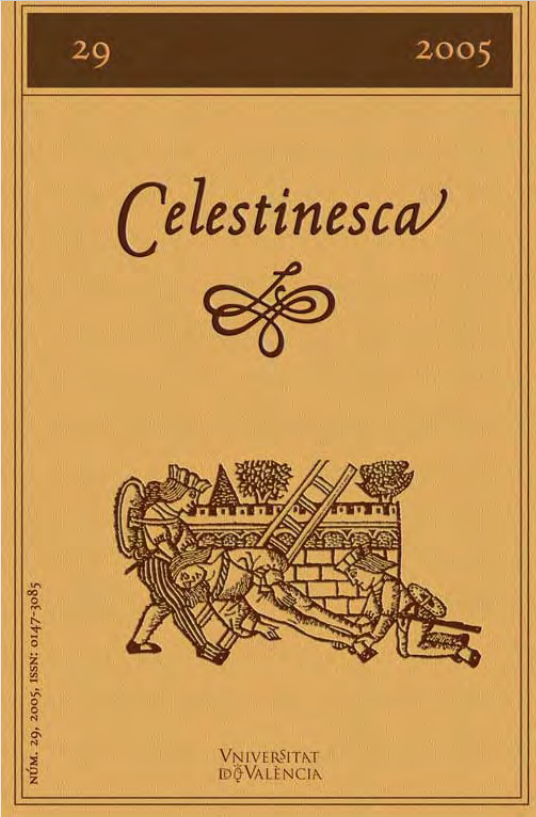«Huego de amor»: la metáfora amor fuego en la estructura de Celestina
DOI:
https://doi.org/10.7203/Celestinesca.29.20051Keywords:
Celestina, representation of love, metaphor, love as fire, Troy, classical references Abstract
Abstract
In the study of Celestina, contemporary critics have frequently analyzed how the work represents love and lovers. Our study contributes to determine love’s role in Celestina by examining a pervasive metaphor in the text, love as fire, and its implications. By far, the most common way in which the characters of Celestina describe love is by referring to a classical metaphor: love as fire. In fact, the phrase «huego de amor» (love’s fire) appears specially frequently in Celestina to describe the characters feelings. The expression appears in connection to two famous urban fires of classical Antiquity: those of Troy and Rome. Fiery love played a decisive role in these two well-known fires, and that connection implies that both the love as fire metaphor and urban fires warn the reader about the tragical end of Celestina’s lovers. Thusly, the work connects urban fire and love as fire to communicate a moral lesson about the dangers of love.
 Downloads
Downloads
Downloads
Published
How to Cite
-
Abstract814
-
PDF (Español)581
Issue
Section
License
![]() Celestinesca is committed to the dissemination of knowledge, that is why access to its contents is free and is ruled by a Creative Commons Attribution-NonCommercial-NoDerivatives 4.0 license.
Celestinesca is committed to the dissemination of knowledge, that is why access to its contents is free and is ruled by a Creative Commons Attribution-NonCommercial-NoDerivatives 4.0 license.
Authors retain the rights to their works. Therefore, they can disseminate them and deposit them in the repository, institutional or not, that they wish. However, they are kindly requested to do so by providing the full bibliographic reference and the corresponding DOI.
Celestinesca does not charge authors for submitting, processing, reviewing or publishing their articles.





